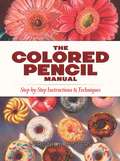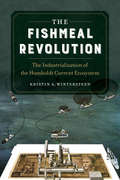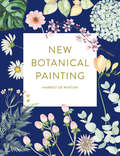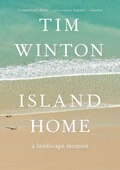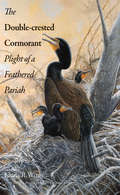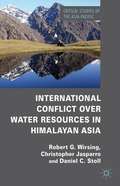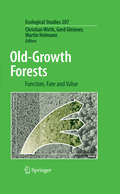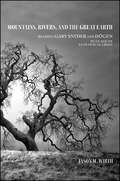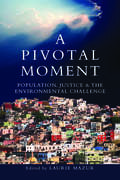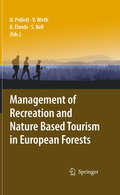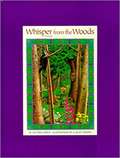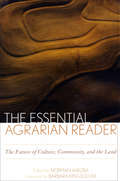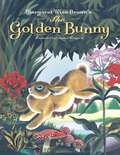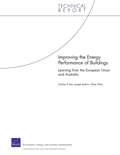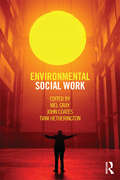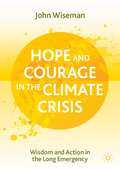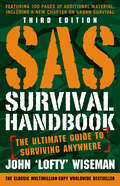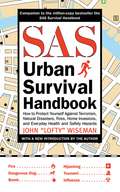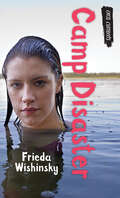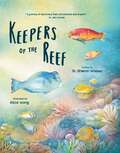- Table View
- List View
The Colored Pencil Manual: Step-by-Step Instructions and Techniques (Dover Art Instruction Ser.)
by Veronica WintersExperienced artists looking to master a new medium will relish this comprehensive guide to using colored pencils by Veronica Winters, author of How to Color Like an Artist. Step-by-step projects with photos and directions illustrate the many details that bring a simple composition to brilliant life, offering readers a comprehensive overview of colored pencil techniques.A brief introduction covers necessary materials and explains the book's overall approach, and subsequent chapters address specific techniques. Each lesson features color swatches that match the colors of different pencil brands, as well as the type of drawing paper and other supplies that will work best for the artwork. Winters expertly covers such techniques as shading and blending and discusses a wealth of other topics, including the importance of light, composition, drawing solid objects in 3-D, color theory, how to draw textures and fabric, how to create symmetrical shapes, and many other aspects of colored pencil drawing.
The Fishmeal Revolution: The Industrialization of the Humboldt Current Ecosystem
by Kristin A. WintersteenOff the Pacific coast of South America, nutrients mingle with cool waters rising from the ocean’s depths, creating one of the world’s most productive marine ecosystems: the Humboldt Current. When the region’s teeming populations of fish were converted into a key ingredient in animal feed—fishmeal—it fueled the revolution in chicken, hog, and fish farming that swept the United States and northern Europe after World War II.The Fishmeal Revolution explores industrialization along the Peru-Chile coast as fishmeal producers pulverized and exported unprecedented volumes of marine proteins to satisfy the growing taste for meat among affluent consumers in the Global North. A relentless drive to maximize profits from the sea occurred at the same time that Peru and Chile grappled with the challenge of environmental uncertainty and its potentially devastating impact. In this exciting new book, Kristin A. Wintersteen offers an important history and critique of the science and policy that shaped the global food industry.
Dragon Walk: On Reef Recovery & Political Will
by Robert WintnerThe three main hubs of aquarium trade devastation are Indonesia, the Philippines, and Hawaii. Each has its own sad story of political corruption and theft of natural resources to benefit a greedy, ruthless few. Yet, despite facing a litany of challenges, each hub shows faint hope for progress: with Komodo National Park in Indonesia, a few bright lights in the development of Philippine reef management, and an anti-aquarium campaign taking hold in Hawaii. A beautiful coffee table photo book is one thing. Dragon Walk is a political grenade, willing to name culprits, political assassins, and nitwits with less spinal fortitude than most invertebrates. Dragon Walk is far more vital; a no-holds-barred grapple with evil and reef devastation that shines a light where others fear to tread.
New Botanical Painting
by Harriet de WintonAward-winning artist Harriet de Winton shows you how to create contemporary watercolour artworks to treasure and share. Through more than 30 step-by-step projects, discover how to paint individual flowers and foliage, as well as beautiful botanical compositions. Use your new skills to make art for your wall, unique cards, invitations, or simply paint for pleasure.
New Botanical Painting
by Harriet de WintonAward-winning artist Harriet de Winton shows you how to create contemporary watercolour artworks to treasure and share. Through more than 30 step-by-step projects, discover how to paint individual flowers and foliage, as well as beautiful botanical compositions. Use your new skills to make art for your wall, unique cards, invitations, or simply paint for pleasure.
Island Home: A Landscape Memoir
by Tim WintonThe writer explores his beloved Australia in a memoir that is “a delight to read [and] a call to arms . . . It beseeches us to revere the land that sustains us” (Guardian).From boyhood, Tim Winton’s relationship with the world around him?rock pools, sea caves, scrub, and swamp?has been as vital as any other connection. Camping in hidden inlets, walking in high rocky desert, diving in reefs, bobbing in the sea between surfing sets, Winton has felt the place seep into him, and learned to see landscape as a living process. In Island Home, Winton brings this landscape?and its influence on the island nation’s identity and art?vividly to life through personal accounts and environmental history.Wise, rhapsodic, exalted?in language as unexpected and wild as the landscape it describes?Island Home is a brilliant, moving portrait of Australia from one of its finest writers, the prize-winning author of Breath, Eyrie, and The Shepherd’s Hut, among other acclaimed titles.
The Double-crested Cormorant
by Linda R. WiresThe double-crested cormorant, found only in North America, is an iridescent black waterbird superbly adapted to catch fish. It belongs to a family of birds vilified since biblical times and persecuted around the world. Thus it was perhaps to be expected that the first European settlers in North America quickly deemed the double-crested cormorant a competitor for fishing stock and undertook a relentless drive to destroy the birds. This enormously important book explores the roots of human-cormorant conflicts, dispels myths about the birds, and offers the first comprehensive assessment of the policies that have been developed to manage the double-crested cormorant in the twenty-first century. Conservation biologist Linda Wires provides a unique synthesis of the cultural, historical, scientific, and political elements of the cormorant's story. She discusses the amazing late-twentieth-century population recovery, aided by protection policies and environment conservation, but also the subsequent U.S. federal policies under which hundreds of thousands of the birds have been killed. In a critique of the science, management, and ethics underlying the double-crested cormorant's treatment today, Wires exposes "management" as a euphemism for persecution and shows that the current strategies of aggressive predator control are outdated and unsupported by science.
International Conflict over Water Resources in Himalayan Asia
by Robert G. Wirsing Daniel C. Stoll Christopher JasparroThe authors explore the fresh water crisis of Himalayan Asia. While the region hosts some of the world's mightiest rivers, it is also home to rapidly modernizing, increasingly affluent, and demographically multiplying societies, ensuring the rapid depletion of water resources and of disputes over ownership of transboundary waters.
Dan Carter and the Great Carved Face
by Mildred A. WirtAs Dan Carter and his pack of Cub Scout denners prepare for a pow-wow competition with another den, they encounter a work in progress of a strange carved face on the wall of a ravine. Suddenly items are missing and their pow-wow projects are damaged or missing. Then, two Navajo Indians turn up, suspicious and rarely friendly. Can they solve the mysteries before someone gets hurt?
Old-Growth Forests
by Christian Wirth Martin Heimann Gerd GleixnerMany terms often used to describe old-growth forests imply that these forests are less vigorous, less productive and less stable than younger forests. But research in the last two decades has yielded results that challenge the view of old-growth forests being in decline. Given the importance of forests in battling climate change and the fact that old-growth forests are shrinking at a rate of 0.5% per year, these new results have come not a moment too soon. This book is the first ever to focus on the ecosystem functioning of old-growth forests. It is an exhaustive compendium of information that contains original work conducted by the authors. In addition, it is truly global in scope as it studies boreal forests in Canada, temperate old-growth forests in Europe and the Americas, and global tropical forests. Written in part to affect future policy, this eminently readable book is as useful for the scientist and student as it is for the politician and politically-interested layman.
Mountains, Rivers, and the Great Earth: Reading Gary Snyder and Dōgen in an Age of Ecological Crisis (SUNY series in Environmental Philosophy and Ethics)
by Jason M. WirthFINALIST for the 2017 Foreword INDIES Book of the Year Award in the Philosophy categoryMeditating on the work of American poet and environmental activist Gary Snyder and thirteenth-century Japanese Zen Master Eihei Dōgen, Jason M. Wirth draws out insights for understanding our relation to the planet's ongoing ecological crisis. He discusses what Dōgen calls "the Great Earth" and what Snyder calls "the Wild" as being comprised of the play of waters and mountains, emptiness and form, and then considers how these ideas can illuminate the spiritual and ethical dimensions of place. The book culminates in a discussion of earth democracy, a place-based sense of communion where all beings are interconnected and all beings matter. This radical rethinking of what it means to inhabit the earth will inspire lovers of Snyder's poetry, Zen practitioners, environmental philosophers, and anyone concerned about the global ecological crisis.
A Pivotal Moment: Population, Justice, and the Environmental Challenge
by Tim Wirth Laurie Ann Mazur Martha Farnsworth Riche Susan Gibbs Steve Sinding Tim CohenThrough a series of essays by leading demographers, environmentalists and reproductive health advocates, A Pivotal Moment offers a new perspective on the complex connection between population dynamics and environmental quality. It presents the latest research on the relationship between population growth and climate change, ecosystem health and other environmental issues. It surveys the new demographic landscape--in which population growth rates have fallen, but human numbers continue to increase. It looks back at the lessons learned from half a century of population policy--and forward to proposetwenty-first century population policies that are sustainable and just.A Pivotal Moment puts forth the concept of "population justice," which is inspired by reproductive justice and environmental justice movements. Population justice holds that inequality is a root cause of both rapid population growth and environmental degradation. As the authors in this volume explain, to slow population growth and build a sustainable future, women and men need access to voluntary family planning and other reproductive health services. They need education and employment opportunities, especially for women. Population justice means tackling the deep inequities--both gender and economic--that are associated with rapid population growth and unsustainable resource consumption. Where family planning is available, where couples are confident their children will survive, where girls go to school, where young men and women have economic opportunity--there couples will have healthier and smaller families.
Management of Recreation and Nature Based Tourism in European Forests
by Veronika Wirth Simon Bell Ulrike Pröbstl Birgit H. ElandsThis book provides for the first time a Europe-wide overview on the state of the art of management of recreation and nature tourism in forests. It describes the current situation and conflicts in the different regions of Europe and provides solutions illustrated by good practise examples. It addresses traditions, differences and similarities in European forests as well as new tasks, goals and strategies. The final discussion provides a profound insight into future trends regarding forest recreation and nature based tourism.
Whisper from the Woods
by Victoria WirthA poetic portrayal of the cycle of life of a forest as they share thoughts and wisdom over the years
The Essential Agrarian Reader: The Future of Culture, Community, and the Land
by Norman Wirzba“Eminently quotable and passionately argued essays” on living in harmony with the earth and each other, by Wes Jackson, Wendell Berry, and more (Library Journal, starred review).Includes a Foreword by Barbara KingsolverA compelling worldview with advocates from around the globe, agrarianism challenges the shortcomings of our industrial and technological economy. Not simply focused on farming, the agrarian outlook encourages us to develop practices and policies that promote the health of land, community, and culture. Agrarianism reminds us that no matter how urban we become, our survival will always be inextricably linked to the precious resources of soil, water, and air.Combining fresh insights from the disciplines of education, law, history, urban and regional planning, economics, philosophy, religion, ecology, politics, and agriculture, these original essays develop a sophisticated critique of our culture’s current relationship to the land, while offering practical alternatives. Leading agrarians, including Wendell Berry, Vandana Shiva, Wes Jackson, Gene Logsdon, Brian Donahue, Eric Freyfogle, and David Orr, explain how our goals should be redirected toward genuinely sustainable communities. These writers call us to an honest accounting and correction of our often-destructive ways. They suggest how our society can take practical steps toward integrating soils, watersheds, forests, wildlife, urban areas, and human populations into one great system—a responsible flourishing of our world and culture.
Margaret Wise Brown's The Golden Bunny
by Margaret Wise BrownA beautiful gift edition of Margaret Wise Brown's classic! This wonderful collection of bunny stories and poems, by the author of Goodnight Moon, has been reissued for a new generation in a beautiful hardcover edition. Margaret Wise Brown&’s witty writing, featuring bunnies in all seasons, is brought to life with lush, ornamental paintings by Caldecott Medalist Leonard Weisgard. This deluxe picture book will be a special Easter gift for a child, or any fan of Margaret Wise Brown and Leonard Weisgard.
Improving the Energy Performance of Buildings
by Oliver Wise Charles P. Ries Joseph JenkinsThis study examines how policies to increase energy efficiency in buildings in the European Union and Australia have worked and draws implications for the design of similar public policies for the United States. It appears that effective policies to promote energy efficiency can be devised using information disclosure, building codes, financial incentives, and benchmarking. Insights are presented to help designers of analogous U.S. policies.
Environmental Social Work: Racial Preference In Black And White (Positions: Education, Politics, And Culture Ser.)
by Tim J. WiseSocial work has been late to engage with the environmental movement. Often working with an exclusively social understanding of environment, much of the social work profession has overlooked the importance of environmental issues. However, recently, the impact of and worldwide attention to climate change, a string of natural disasters, and increased understanding of issues around environmental justice has put the environment, sustainability, and well-being in the spotlight. Divided into three parts, this field-defining work explores what environmental social work is, and how it can be put into practice. The first section focuses on theory, discussing ecological and social justice, as well as sustainability, spirituality and human rights. The second section comprises case studies of evolving environmental social work practice. The case studies derive from a range of areas from urban gardens and community organizing to practice with those affected by climate change. The final section – relevant to students and lecturers – looks at learning about environmental issues in social work. Environmental Social Work provides an integrated theoretical and practical overview of why and how social work might respond to environmental factors affecting the societies and people they work with at international, national, local and individual levels.
Hope and Courage in the Climate Crisis: Wisdom and Action in the Long Emergency
by John WisemanAs the risks of the climate crisis continue to grow, so too do the challenges of facing a harsh climate future with honesty and courage; justice and compassion; meaning and purpose. Hope and Courage in the Climate Crisis explores diverse sources of learning and wisdom –from climate scientists and activists; philosophers and social theorists; Indigenous cultures and ways of life; faith based and spiritual traditions; artists and writers –which can help us live courageous, compassionate and creative lives in a world of rapidly accelerating climatic and ecological risk.Accelerating the transition to a just and resilient zero-carbon society will require visionary leadership and courageous collective action. Awareness that rapid action might still be insufficient to prevent severe and irreversible social and ecological damage is however a source of deep concern for many people passionately committed to decisive climate action. Drawing on broad experience as a climate activist, researcher and policy maker John Wiseman provides a wide ranging, accessible and provocative guided tour of ideas which can inspire and sustain radical hope and defiant courage in the long emergency which now lies before us.
SAS Survival Handbook, Third Edition
by John 'Lofty' WisemanThe ultimate guide to surviving anywhereUpdated to reflect the latest in survival knowledge and technology, and covering new topics such as urban survival and terrorism, the internationally bestselling SAS Survival Handbook is the definitive resource for all campers, hikers, and outdoor adventurers. From basic campcraft and navigation to fear management and strategies for coping with any type of disaster, this complete course includes:Being prepared: Understanding basic survival skills, like reading the weather, and preparation essentials, such as a pocket survival kit.Making camp: Finding the best location, constructing the appropriate shelter, organizing camp, staying warm, and creating tools.Food: What to eat, what to avoid, where to find it, and how to prepare it.First aid: A comprehensive course in emergency/wilderness medicine, including how to maximize survival in any climate or when injured.Disaster survival: How to react in the face of natural disasters and hostile situations--and how to survive if all services and supplies are cut off.Self-defense: Arming yourself with basic hand-to-hand combat techniques.Security: Protecting your family and property from intrusion, break-ins, and theft.Climate & terrain: Overcoming any location, from the tropics to the poles, from the desert to the mountains and sea.
SAS Urban Survival Handbook: How to Protect Yourself Against Terrorism, Natural Disasters, Fires, Home Invasions, and Everyday Health and Safety Hazards
by John Lofty" WisemanJohn "Lofty" Wiseman is the author of the bestselling SAS Survival Handbook, the definitive guide to survival in the wild from Britain's Special Air Service. Now he has compiled a complete guide to survival in the urban jungle. Every year in America there are thousands of fatal accidents in the home—more than on the roads, and many more than in the great outdoors. Fire, electricity, water, gas, sharp knives, poisons, chemicals—these valuable tools can quickly become dangerous weapons when not treated with proper respect and understanding. Add to these the risks of travel, terrorism, muggings, rape, tsunamis, and earthquakes. We are constantly reminded that the world is a dangerous place. Wiseman shows readers how to think realistically and practically about these perils in order to avoid them, whether they are at home, on the street, in school, or in transit. From self-defense techniques to home security systems to coping with natural disasters, this book will teach readers to recognize risks, make quick decisions, and live confidently in the modern urban world.
Writing Metamorphosis in the English Renaissance
by Susan WisemanTaking Ovid's Metamorphoses as its starting point, this book analyses fantastic creatures including werewolves, bear-children and dragons in English literature from the Reformation to the late seventeenth century. Susan Wiseman tracks the idea of transformation through classical, literary, sacred, physiological, folkloric and ethnographic texts. Under modern disciplinary protocols these areas of writing are kept apart, but this study shows that in the Renaissance they were woven together by shared resources, frames of knowledge and readers. Drawing on a rich collection of critical and historical studies and key philosophical texts including Descartes' Meditations, Wiseman outlines the importance of metamorphosis as a significant literary mode. Her examples range from canonical literature, including Shakespeare's A Midsummer Night's Dream and The Tempest, to Thomas Browne on dragons, together with popular material, arguing that the seventeenth century is marked by concentration on the potential of the human, and the world, to change or be changed.
Camp Disaster (Orca Currents)
by Frieda WishinskyCharlotte Summers is sure that summer camp is going to be a disaster. And she's right. But it's not as disastrous for her as it is for her counselor, Marla. Marla has no control over the girls in her charge. The control is held by the cabin's mean girl. Charlotte realizes that she could tip the balance of power and unseat the bully, but does she have the courage to go for it?
Keepers of the Reef
by Sharon WismerTakes children to the underwater world of Australia's Great Barrier Reef for a prime example of how a complex ecosystem depends on its keystone species. Sharon Wismer—reef ecologist and mom—is the best tour guide a kid could have for a visit to the underwater world of Australia’s Great Barrier Reef. Alice Wong’s richly detailed, accurate watercolors take a boy and girl snorkeling to see the fishes that maintain the ecological balance between the corals and their main competitor, algae. Without the fish species that brush, crop, scrape, excavate, and browse the algae, coral reefs would die. A coral reef is a brilliant and colorful example of how a complex ecosystem functions and why its keystone species are critical to its health. The Great Barrier Reef is one of Earth’s most celebrated natural treasures. Here children discover why the reef is threatened and what we can all do to help protect it. Endorsements are coming from Charlie Veron (“the godfather of coral,” featured in the 2017 film Chasing Coral) and David Bellwood, a world-renowned reef fish ecologist whose lab is the source of much of the information in this book. Keepers of Reef is the rare children’s book combining cutting-edge science with narrative and pictorial magic. Thorough backmatter sources and resources are included.
Rain Player
by David WisniewskiTo bring rain to his thirsty vil¬lage, Pik challenges the rain god to a game of pok-a-tok.
